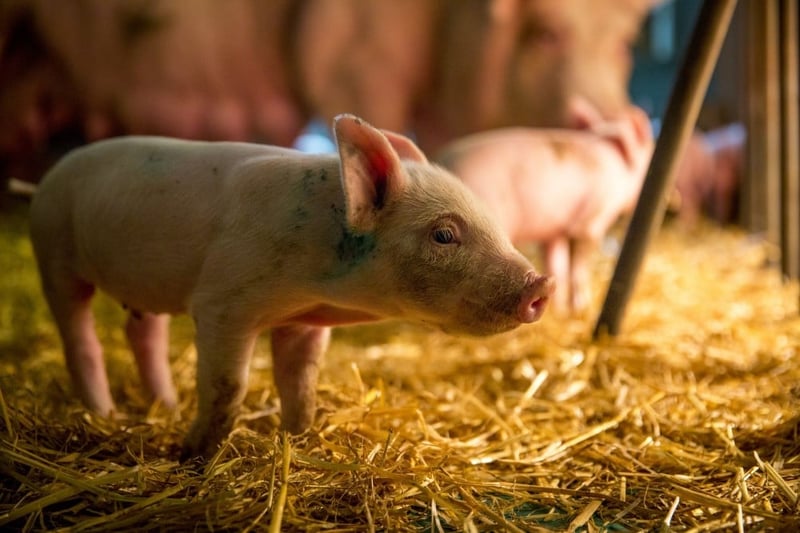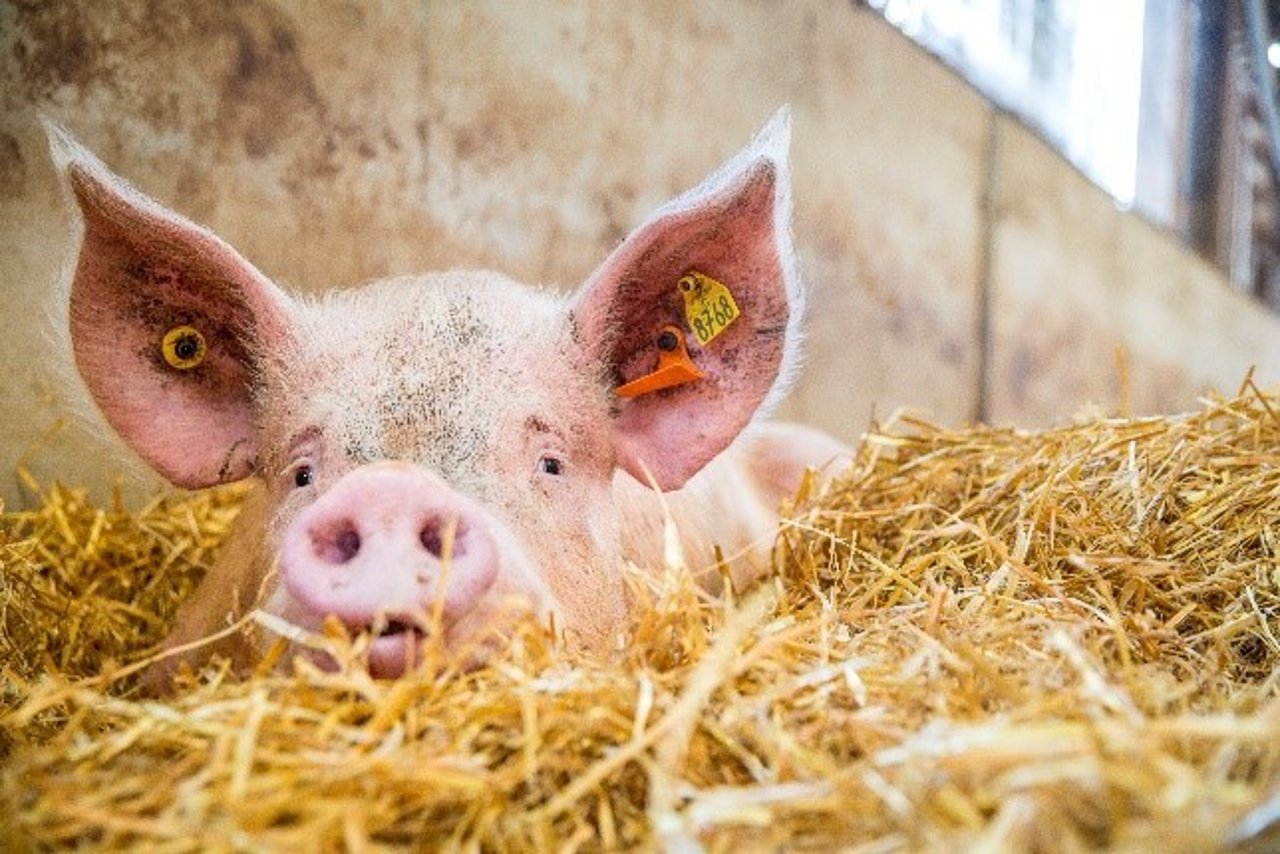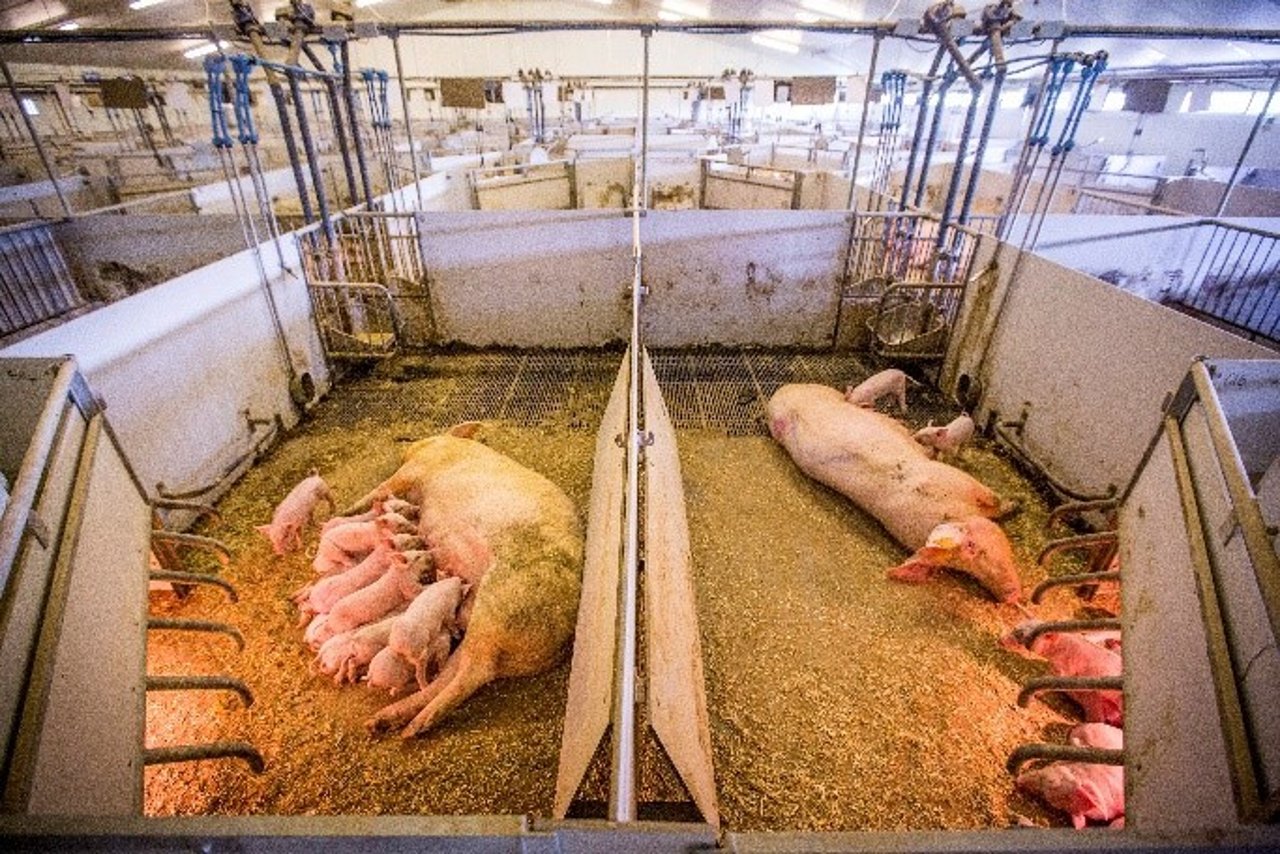
Hogs and Kisses for Mother’s day
News
Animal Welfare Specialist Priya Motupalli discusses the motivated nest-building activities of pigs.
Birds build nests. Pretty common knowledge. And, if you’ve been paying attention to our cage-free campaign, you’ll know that having access to a nest site is particularly important for laying hens.
But laying hens aren’t the only farm animal that nest-build. Sows (female pigs that have given birth) and gilts (female pigs that haven’t given birth yet) do as well! Nest-building is an important maternal behavior performed by these animals, and as with laying hens, sows are willing to work hard to gain access to nesting material.
One could call them motivated moms!
For sows and gilts alike, nest-building is a complex behavior performed in a number of steps:
Under natural conditions, sows will isolate themselves from other group members about 1-2 days prior to farrowing (giving birth) to find an appropriate nest-site.
Typically nest-sites will have some shelter from inclement weather and have well-drained soil, suitable to digging a shallow hole.
From there, the sow will build a shallow hole by rooting up and pawing at the ground.
She will then collect robust nesting material, like twigs and branches to form the outer edge of the nest.
After the outer edges are formed, she’ll spend time collecting softer nesting material like grass and leaves to carefully arrange throughout the nest using her head and front legs—this will provide a safe and warm environment for her piglets once they are born.
This maternal behavior is regulated both by internal factors (hormones) and external factors (environmental conditions like temperature or abundance of grass). In the absence of nesting material or sufficient space, sows often still attempt to perform the sequence of behaviors that characterize nest-building. Under commercial conditions, sows are typically unable to express this behavior, but some producers employ free-farrowing systems to ensure that they can!
The more we understand about the maternal behavior of farm animals, the better equipped we are to design systems that provide for their behavioral needs.
The photo above shows an example of free-farrowing pens.
Sows and piglets have an open area to facilitate normal interaction and suckling as well as separate areas for ease of management. Sows are also provided with some substrate to engage in nest-building behaviour!

